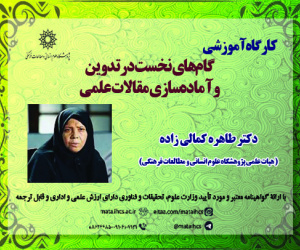تحول در نحوه کاربرد حق وتو در شورای امنیت سازمان ملل متحد (مقاله علمی وزارت علوم)
درجه علمی: نشریه علمی (وزارت علوم)
آرشیو
چکیده
پژوهش حاضر به بیان این نکته می پردازد که نحوه کاربرد حق وتو در شورای امنیت سازمان ملل متحد همواره متاثر از تحولات روابط و موازنه قدرت اعضاء دائم این شورا بوده است. بر این اساس در دوره جنگ سرد با توجه به تخاصم و تضاد اعضاء دائم در قالب جهان دو قطبی و امکان و تمایل کمتر برای همکاری و مشورت این اعضاء در شورای امنیت، می توان شاهد استفاده وسیع آنان از حق وتو در جلسات علنی شورا بود. این نحوه کاربرد حق وتو پس از جنگ سرد با فروپاشی شوروی و نظام دوقطبی، فروکش کردن مخاصمات و تضادهای اعضاء دائم، امکان و تمایل بیشتر برای همکاری و مشورت در شورای امنیت، مماشات اعضاء دائم در مقابل یکدیگر و وجود مخالفت ها و ادعاها نسبت به حق وتو متحول شده و اثرات خود را به دو صورت نمایان ساخته است: نخست کاهش شدید تعداد وتوهای باز یا واقعی در جلسات علنی شورای امنیت سازمان ملل متحد، دوم افزایش استفاده از وتوی پنهان عمدتاً در مشورت های غیررسمی شورای امنیت سازمان ملل متحد.The Evolution of the Use of Veto Right in United Nation Security Council
This study suggests that the way of using the Right of Veto in the UN Security Council has always been affected by the evolution of relations and the balance of power among its permanent members. Therefore, during the Cold War, regarding hostility and animosity between the permanent members in the framework of the Bipolar World and their less possibility and tendency for cooperation and consultation in the Security Council, there was a widespread use of their Right of Veto in the public meetings of the Security Council. This above mentioned way of using the Right of Veto after the end of the Cold War has been transformed through the collapse of the former Soviet Union, reducing the hostilities and animosities between the permanent members, more possibility and tendency for cooperation and consultation in the Security Council, the appeasement of the permanent members towards each other and the development of objections and claims to the Right of Veto; a transformation that has shown its impacts in two ways: First, high reduction of the number of the open or real vetoes in the UN Security Council public meetings and Second, increase in the use of the hidden veto, mainly in the UN Security Council informal consultations.









